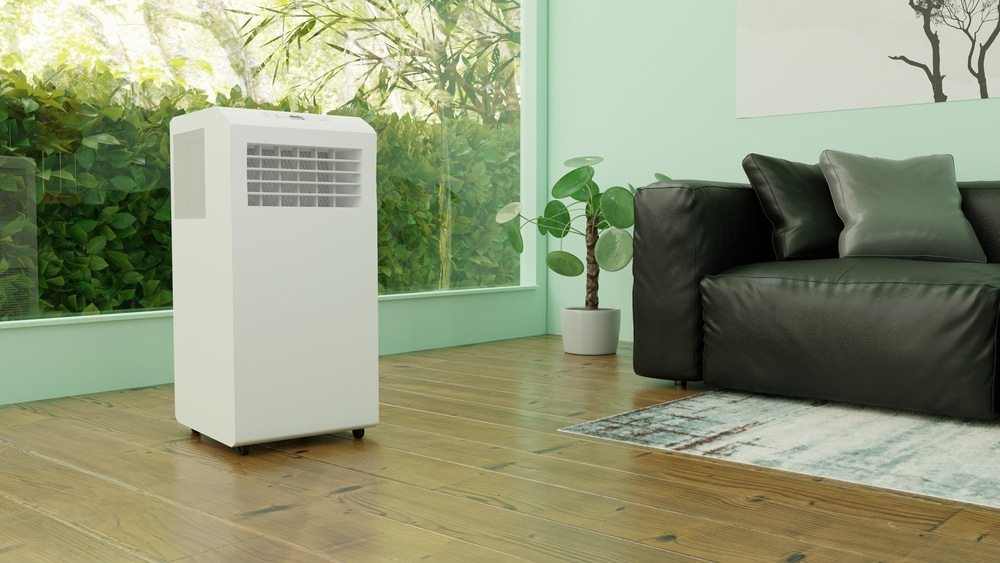
For a variety of spaces and structures, the need for dehumidification is a significant one. Whether needed to reduce mold and mildew threats, improve skin irritation and breathing, or any other reason, there are a number of different methods that might be used and one of the most common is the use of a portable dehumidifier.
At 1 Source Portable Air, dehumidifiers are just one of several types of drying and air quality equipment options we offer. We provide a variety of models and styles depending on what your application is, plus expertise on what to prioritize as you're making your selection. What are some of the key features or accessories that you should be looking at when choosing the ideal dehumidifier rental? Here are several.
First and foremost, one of the absolute necessities for any dehumidifier you consider is an Energy Efficiency Certification. This means the product is rated to help save energy while providing a reliable solution for your specific space or structure.
Energy Star, the primary entity providing these certifications in the US, is a national Environmental Protection Agency (EPA) program committed to helping individuals and businesses save money while protecting the planet. They have an extensive list of appliances, products, and solutions that qualify for their certification, so make sure your chosen dehumidifier is on this list before making any purchase or rental decision.
Most people are familiar with their thermostat, which automatically adjusts and regulates temperature for a given HVAC system. For dehumidifiers, the equivalent component is the humidistat which keeps track of humidity levels in the air.
This onboard feature helps to ensure that you don't have to constantly keep an eye on your dehumidifier, as it will automatically adjust to maintain the specified level of humidity. Not all dehumidifiers come with a humidistat —for certain simpler needs, one might not be necessary but it's worth considering if you're looking to maximize convenience and efficiency.
For sound-sensitive applications, the decibel (dB) rating is a key factor to consider. Depending on the unit’s size and power, dehumidifiers can vary widely in terms of how loudly they operate, so take a moment to investigate the dB rating for any models you’re considering before making any decisions.
Quiet dehumidifiers are definitely available and include options that range all the way down to less than 30 dB, so don't be discouraged if you need a dehumidifier that won't disturb your daily life.
One key element to consider is how the condensate is being removed from the space. Some dehumidifier models come equipped with an onboard condensate pump; these models will also include a drain hose to automatically pump the water from the unit. This feature allows you to simply plug in your unit and let it go, without having to worry about emptying water pans or other forms of condensate removal. Conversely, dehumidifiers without an onboard condensate pump utilize a reservoir that fills with the condensation being removed from the air. Once full, this reservoir needs to be manually emptied.
Because many dehumidifiers run at low temperatures, they are sometimes affected by frost buildup on the coils. This is an issue as it reduces the efficiency of your unit, so you should look for a dehumidifier that comes with an automatic frost sensor. This sensor will automatically shut off the unit if there's too much frost, thus protecting it from any potential damage.
In a similar vein, some models feature automatic de-icers which can help to ensure that your unit doesn't ever suffer frost damage. This is especially important for those who are operating their dehumidifier in lower temperature environments, as the risk of frost increases significantly in these climates.
If equipped with an automatic de-icer, the dehumidifier will automatically cycle on the heater within the unit, thus preventing any frost from forming.
Many of today's dehumidifier models come with onboard timers and auto-start/stop features, which make operation much more convenient. With these integrated components, you can set up a schedule for your dehumidifier to turn on or off at a certain time.
Finally, most dehumidifiers will come with some form of alert system to let you know when the water tank is full or if there's a component within the unit that needs attention. These alerts can be as simple as an indicator light on the control panel, or they may include more advanced features such as audible alarms or even text message notifications.
These alerts help to ensure your unit is always running efficiently, so keep the different functionality levels in mind when deciding on a dehumidifier.
Finding the right dehumidifier for your space or structure doesn't have to be difficult— just make sure to keep the elements above in mind before making your decision. With a little bit of research and consideration, you should be able to find the perfect dehumidifier for your needs. By understanding the different components and features available, you can get the most out of any dehumidifier that you choose.
For more here, or to learn about any of our dehumidifier options, speak to our team at 1 Source Portable Air today.